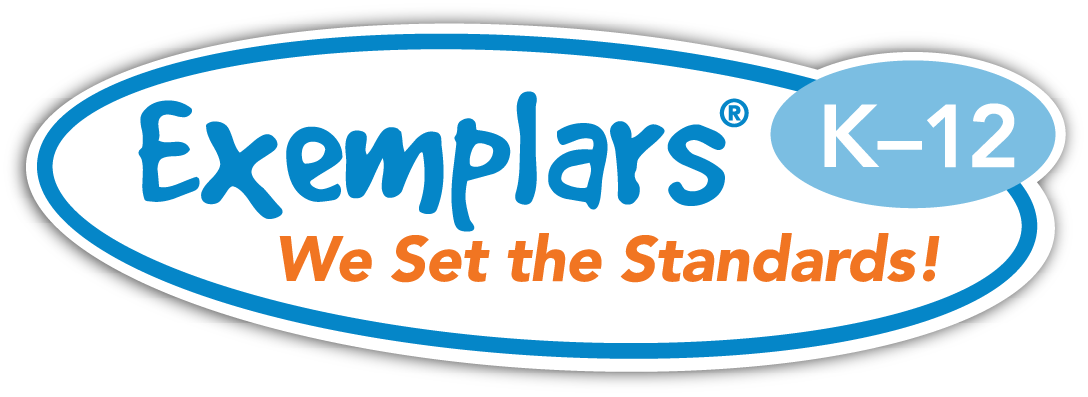Formative Assessment Background
Exemplars Facilitates Formative Assessment
Exemplars is designed to help teachers integrate formative assessment into their classrooms.
Our rubrics and performance tasks provide material that teachers can use for assessment, and that students can use for peer- and self-assessment. Additionally, these tools help teachers define for their students what type of performance meets the standard.
In addition to providing teachers with examples of student work at various levels, our anchor papers also provide students with a concrete understanding of what work meets the standard and why.
Students can also use our rubrics and annotated anchor papers to compare their work to during peer- and self-appraisals. This process demonstrates success as well as offers opportunities for refinement. Based on student performance, teaching and learning strategies can be adjusted.
To help students and teachers become familiar with rubrics and the idea of self-assessment, Exemplars provides an Introduction to Using Rubrics that offers examples of how some teachers have used generic rubrics (not tied to a particular subject area) to help their students get started.
Successful Formative Assessment
Assessment and Teaching Strategies Tied to Successful Formative Assessment
According to studies done by Dylan Wiliam and Paul Black the assessment and teaching strategies most closely tied to successful formative assessment are:
1) Effective Questions
Asking meaningful questions, increasing the wait time for student answers and having rich follow-up activities that extend student thinking. "Put simply, the only point of asking questions is to raise issues about which a teacher needs information or about which the students need to think." (2) p.13
2) Appropriate Feedback
In reviewing the research Black and Wiliam found that giving grades does not improve performance. Using tasks and oral questioning that encouraged students to show understanding, providing comments on what was done well and what needs improvement, also with guidance on how to make improvements should be the focus instead of grades.
3) Peer- and Self-Assessment
Peer-assessment and self-assessment, "secure aims that cannot be achieved in any other way." (2) p.15 Achieving success requires that students have a clear understanding of the standards and are taught the skills of peer- and self-assessment.
Paul Black, C. H., Clare Lee, Bethan Marshall, and Dylan Wiliam (2004). "Working Inside the Black Box: Assessment for Learning in the Classroom". Phi Delta Kappan: 9-21.
Peer- and Self- Assessment
Exemplars material helps lay a solid foundation for successful peer- and self- assessment.
 Some of the benefits for incorporating this practice into your classroom are noted below.
Some of the benefits for incorporating this practice into your classroom are noted below.
For resources to facilitate this process click here.
Students internalize the criteria for high-quality work.
Students who see clear models of work that meet the standards (such as Exemplars anchor papers) and understand why the work meets the standards will begin to make comparisons between their performance and the Exemplars presented. As tasks become more complex and open ended, it is essential that more than one model be provided to assure that students understand different strategies to meet the standards.
Students understand the process of getting to the standard.
Exemplars rubrics should show students where they have been, where they are now and where they will be. Describing progressive levels of performance becomes a guide for the journey, rather than a blind walk though an assessment maze.
Teachers involve students in the monitoring process and shift some of the responsibility for documenting and justifying learning to the students.
Research has demonstrated that high-performing learners do the following:
- Self-monitor
- Self-correct
- Use feedback from peers to guide their learning process
Exemplars student rubrics, written to identify the essence of the expected learning, can be an excellent vehicle for reflective thinking and peer conferencing.
Students understand that standards are "real" and achievable.
Students have a clear understanding of what it means to meet the standard. Exemplars rubrics and annotated anchor papers demonstrate what this type of student work looks like. These resources also show students how they might go beyond what is expected to exceed the standard.
Parents understand expectations and assessment criteria.
When students can articulate to their parents (before, during and at the end of the task), what the standards of performance are, a clear and positive message is received. Parents generally want to support their child's learning and feel helpless, sometimes, because they are unsure of what open-ended tasks are intended to teach. Student rubrics remove the educational jargon yet still describe meaningful learning. Many teachers find rubrics and anchor papers useful during parent conferences as they review a particular student's work.
Formative Assessment Articles
Schools and districts regularly share success stories about their achievements using Exemplars material. Please click on the links below to read newletter articles that include segments about formative assessment.
- Using Exemplars for Formative Assessment "Pays Off"
- "We're Off and Running!" Exemplars Hits the Los Alamos School District
If you have a story that you would like to share, please contact us at info@exemplars.com.
Formative Assessment Tools
Studies show that effective classroom assessment has a greater impact on student achievement than any other type of assessment.
To help students and teachers both incorporate and benefit from successful formative assessment practices, Exemplars has made a sample of its professional development material available for use.
Tools For Teachers
Tools For Students

